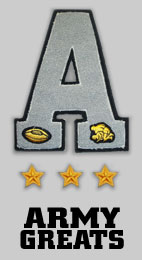
Home
Classes
Coaches
Army Greats
Army Lore
Teams
Of Interest...
About
Submissions
Contact
Newsletter
Credits
Click on small photos
 Cadet will not Lie, Cheat, Steal, or Tolerate Those Who Do Cadet will not Lie, Cheat, Steal, or Tolerate Those Who Do
 USMA at West Point USMA at West Point
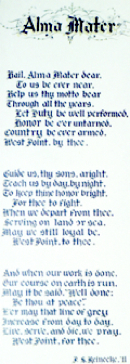 We have changed the wording of our Alma Mater to reflect the fact that our Women Graduates have also given their lives serving this Nation.
We have changed the wording of our Alma Mater to reflect the fact that our Women Graduates have also given their lives serving this Nation.
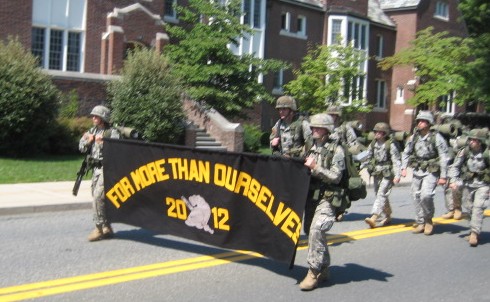 ----- Class of 2012 Motto ------ - "For More Than Ourselves" -Thank you Class of 2012 - for the Honor of Marching with you
The Class of 62 - Can Do ----- Class of 2012 Motto ------ - "For More Than Ourselves" -Thank you Class of 2012 - for the Honor of Marching with you
The Class of 62 - Can Do
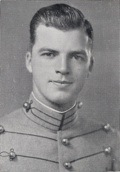 Remember - The Soldiers you will lead Always Come First Remember - The Soldiers you will lead Always Come First
 Motto -- Duty Honor Country Motto -- Duty Honor Country
 The Cadets of West Point
The Cadets of West Point
 They played perhaps Army's Greatest Game. They were the Team that Gave The Most They played perhaps Army's Greatest Game. They were the Team that Gave The Most
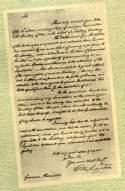 Washington's Letter recommending the establishment of the Academy and the History of West Point
Washington's Letter recommending the establishment of the Academy and the History of West Point

The Oaths We Take
 West Point's Medal of Honor Recipients West Point's Medal of Honor Recipients
 Jefferson Hall - the Academy's new Library.
Jefferson Hall - the Academy's new Library.
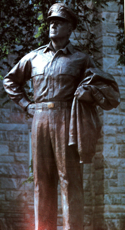 Douglas MacArthur
Douglas MacArthur
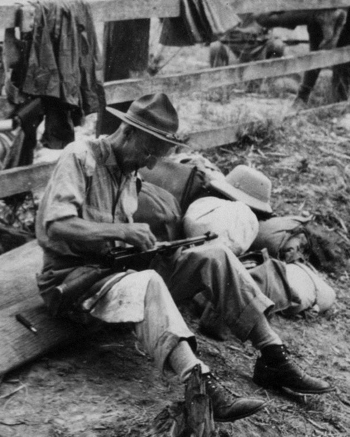
Vinegar Joe Stilwell cleaning his Thompson -The Walkout -Burma 1942
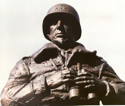 George Patton
George Patton
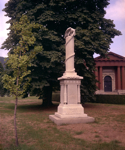 The Monuments of West Point
The Monuments of West Point
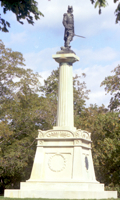 Kosciuszko Monument - Guarding the Hudson ensuring there is no passage of British Man of War
Kosciuszko Monument - Guarding the Hudson ensuring there is no passage of British Man of War
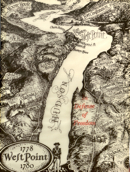 Forts of the Hudson
Forts of the Hudson
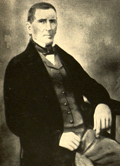
So we'll sing our reminiscences of Benny Havens, Oh!
 Academic Excellence Academic Excellence
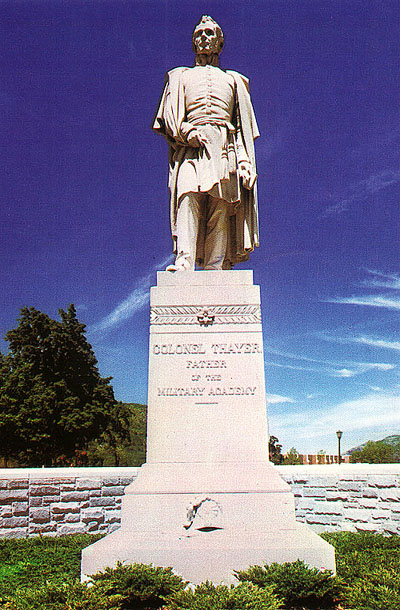 ---- Colonel Thayer ---- Colonel Thayer
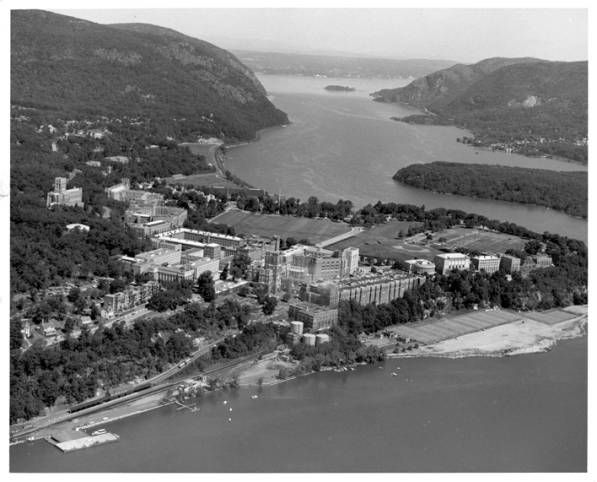 West Point West Point
 Trophy Point Trophy Point
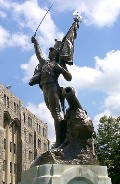 L'Ecole Polytechnique Monument, or The French Monument by Cadets L'Ecole Polytechnique Monument, or The French Monument by Cadets
 Superintendent's Quarters viewed from Thayer Road Superintendent's Quarters viewed from Thayer Road
 Superintendant was not Happy
Black '57
Superintendant was not Happy
Black '57
 Home of the Dean Home of the Dean
 Quarters 104 Quarters 104
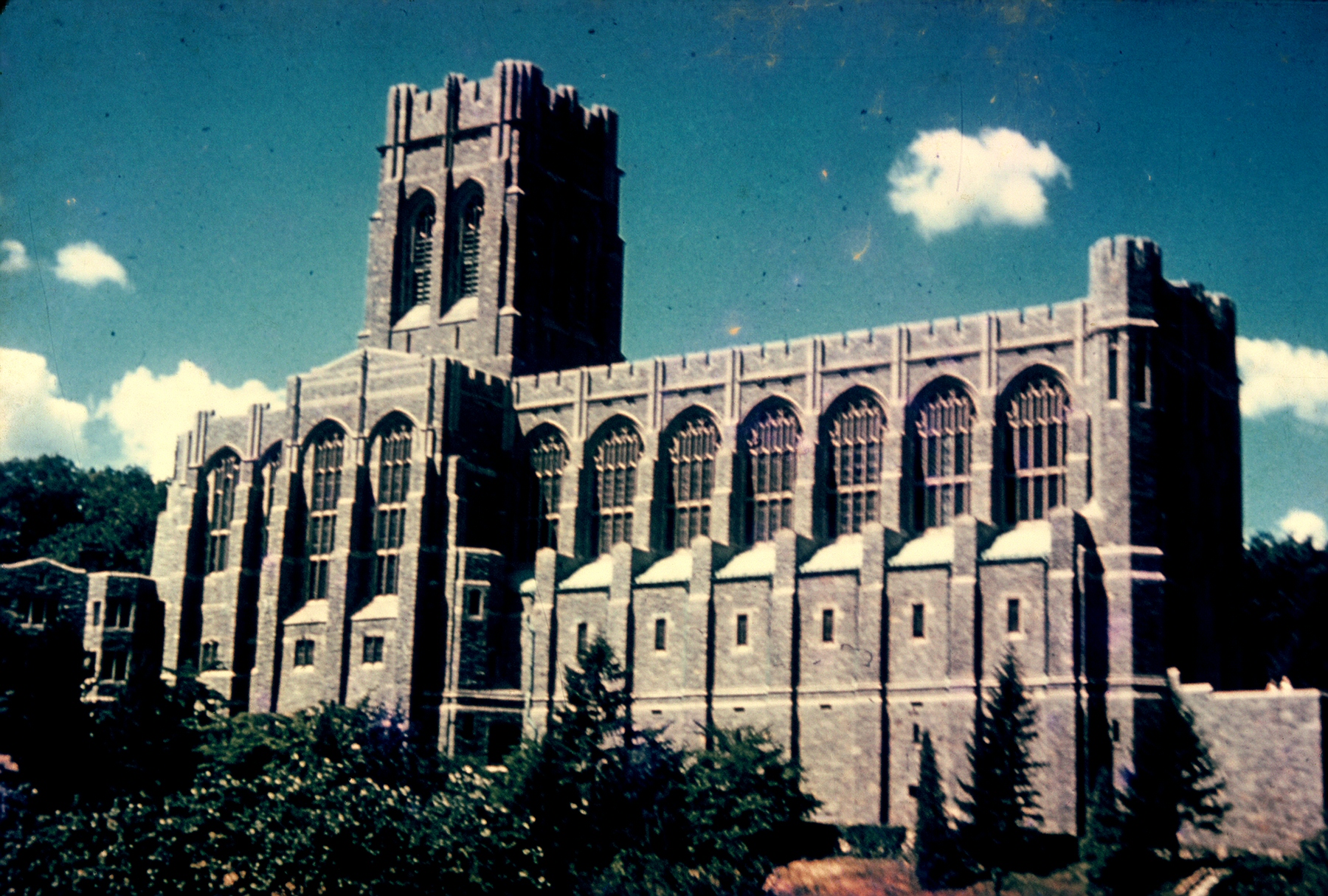 Cadet Chapel Cadet Chapel
 Michie Stadium Michie Stadium
 Arvin Gym Arvin Gym
 Kimsey Athletic Center Kimsey Athletic Center
 Holleder Center Holleder Center
 Washington Monument Washington Monument
 United States Military Academy Band United States Military Academy Band
 Cadet Barracks Cadet Barracks
 Rugby Complex Rugby Complex
 Great Chain Great Chain
 Plain looking toward Washington Hall Plain looking toward Washington Hall
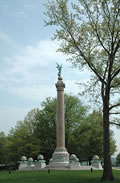 Battle Monument Battle Monument
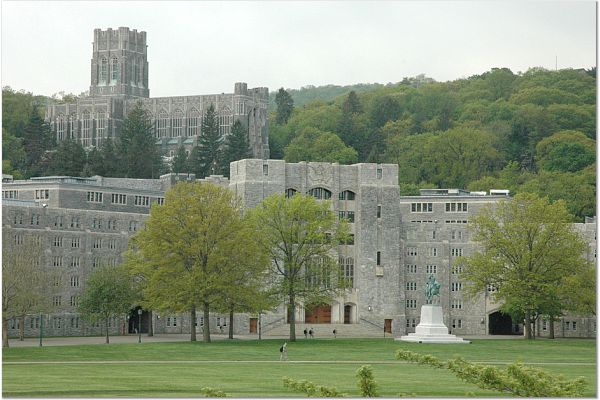 Washington Hall with Cadet Chapel on rocks above. Washington Hall with Cadet Chapel on rocks above.
 Hudson River Hudson River
 Captured Trophies Captured Trophies
 Battle Monument Battle Monument
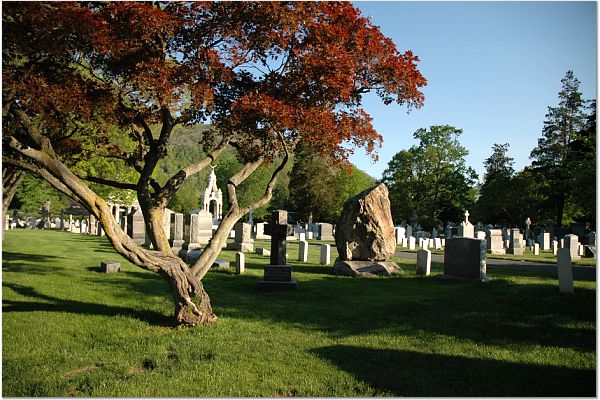 West Point Cemetery West Point Cemetery
 Plain Plain
 Cost to this Nation of Differing Views Cost to this Nation of Differing Views
 Trophy Point -- Our Flag Trophy Point -- Our Flag
 Corps of Cadets Formed in Companies early 1960s Corps of Cadets Formed in Companies early 1960s
 Corps of Cadets Formed in Companies early 1960s Corps of Cadets Formed in Companies early 1960s
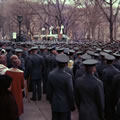 Sending the Army Team off to Beat Navy Sending the Army Team off to Beat Navy
 Army Mule Army Mule
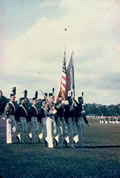 Color Guard Color Guard
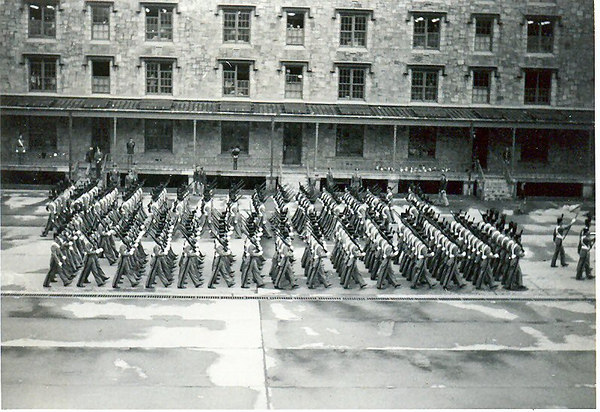
Band Box Review Early 1950's in Central Area
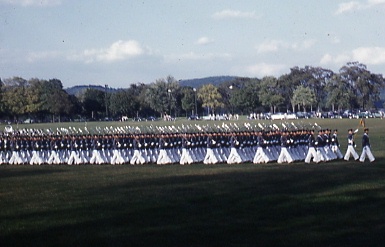 Battalion Mass Early 50's Battalion Mass Early 50's
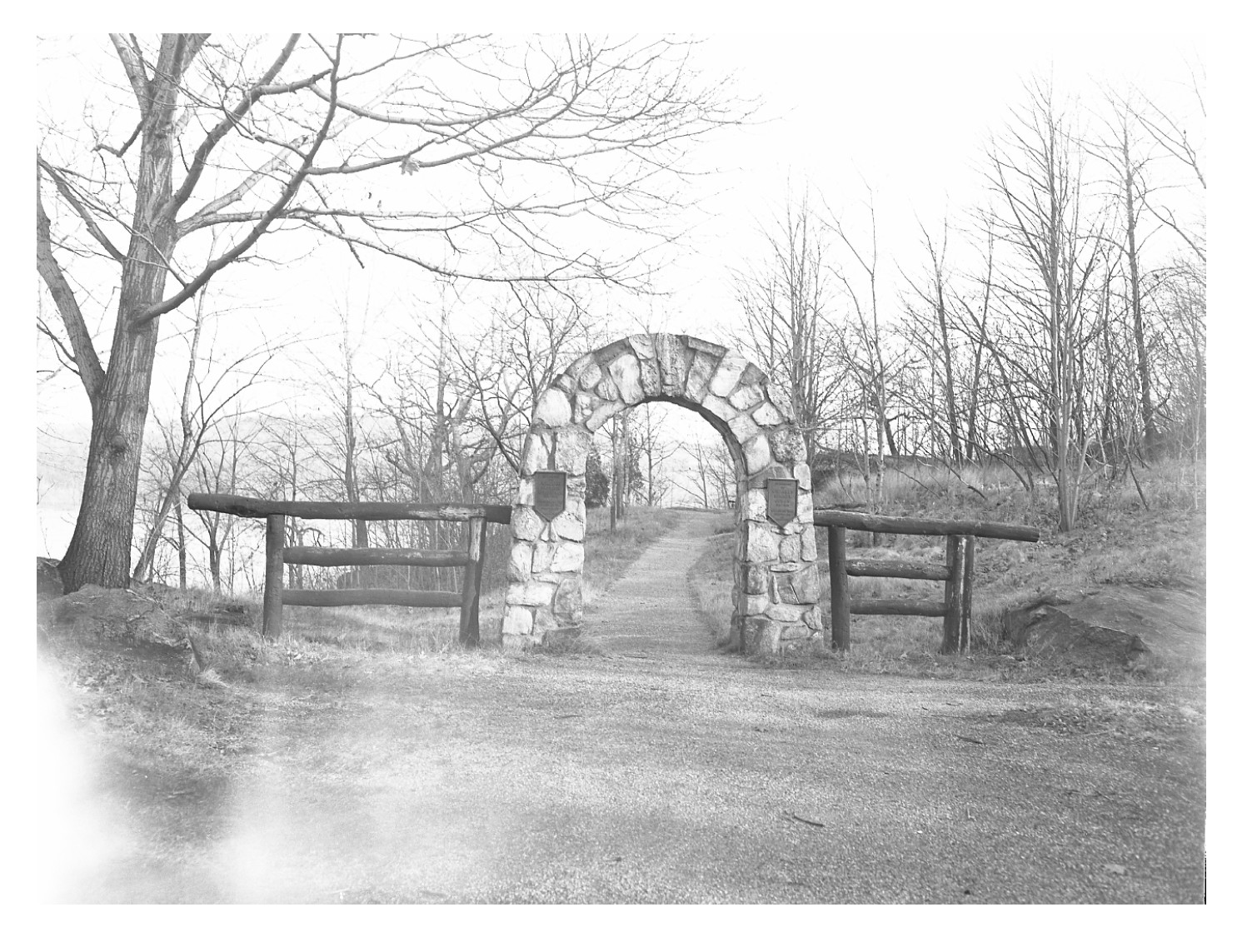 Flirtation Walk Flirtation Walk
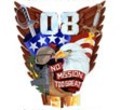
 Arvin Gym Arvin Gym
Duty Honor Country
 Cadet will not Lie, Cheat, Steal, or Tolerate Those Who Do Cadet will not Lie, Cheat, Steal, or Tolerate Those Who Do
 Motto -- Duty Honor Country Motto -- Duty Honor Country
 Remember - The Soldiers you will lead Always Come First Remember - The Soldiers you will lead Always Come First

 Academic Excellence Academic Excellence
 --They played perhaps Army's Greatest Game. They were the Team that Gave The Most --They played perhaps Army's Greatest Game. They were the Team that Gave The Most
 Colonel Thayer Colonel Thayer
 West Point mid 60's West Point mid 60's
 Trophy Point Trophy Point
 L'Ecole Polytechnique Monument, or The French Monument by Cadets L'Ecole Polytechnique Monument, or The French Monument by Cadets
 Superintendent's Quarters viewed from Thayer Road Superintendent's Quarters viewed from Thayer Road
 Cadet Chapel Cadet Chapel
 Michie Stadium Michie Stadium
 Arvin Gym Arvin Gym
 Kimsey Athletic Center Kimsey Athletic Center
 Holleder Center Holleder Center
 Washington Monument Washington Monument
 United States Military Academy Band United States Military Academy Band
 Barracks Barracks
 Rugby Complex Rugby Complex
 Great Chain Great Chain
 Plain looking toward Washington Hall Plain looking toward Washington Hall
 Battle Monument Battle Monument
 Washington Hall with Cadet Chapel on rocks above. Washington Hall with Cadet Chapel on rocks above.
 Hudson River Hudson River
 Captured Trophies Captured Trophies
 Battle Monument Battle Monument
 West Point Cemetery West Point Cemetery
 Plain Plain
 Cost to this Nation of Differing Views Cost to this Nation of Differing Views
 Trophy Point -- Our Flag Trophy Point -- Our Flag
 Corps of Cadets Formed in Companies early 1960s Corps of Cadets Formed in Companies early 1960s
 Corps of Cadets Formed in Companies early 1960s Corps of Cadets Formed in Companies early 1960s
 Sending the Army Team off to Beat Navy Sending the Army Team off to Beat Navy
 Army Mule Army Mule
 Color Guard Color Guard

Band Box Review Early 1950's in Central Area
 Battalion Mass Early 50's Battalion Mass Early 50's
 Flirtation Walk Flirtation Walk
 Cadet will not Lie, Cheat, Steal, or Tolerate Those Who Do Cadet will not Lie, Cheat, Steal, or Tolerate Those Who Do
 Motto -- Duty Honor Country Motto -- Duty Honor Country
 Remember - The Soldiers you will lead Always Come First Remember - The Soldiers you will lead Always Come First
 Academic Excellence Academic Excellence
 They played perhaps Army's Greatest Game. They were the Team that Gave The Most They played perhaps Army's Greatest Game. They were the Team that Gave The Most
 Colonel Thayer Colonel Thayer
 West Point mid 60's West Point mid 60's
 Trophy Point Trophy Point
 L'Ecole Polytechnique Monument, or The French Monument by Cadets L'Ecole Polytechnique Monument, or The French Monument by Cadets
 Superintendent's Quarters viewed from Thayer Road Superintendent's Quarters viewed from Thayer Road
 Cadet Chapel Cadet Chapel
 Michie Stadium Michie Stadium
 Arvin Gym Arvin Gym
 Kimsey Athletic Center Kimsey Athletic Center
 Holleder Center Holleder Center
 Washington Monument Washington Monument
 United States Military Academy Band United States Military Academy Band
 Barracks Barracks
 Rugby Complex Rugby Complex
 Great Chain Great Chain
 Plain looking toward Washington Hall Plain looking toward Washington Hall
 Battle Monument Battle Monument
 Washington Hall with Cadet Chapel on rocks above. Washington Hall with Cadet Chapel on rocks above.
 Hudson River Hudson River
 Captured Trophies Captured Trophies
 Battle Monument Battle Monument
 West Point Cemetery West Point Cemetery
 Plain Plain
 - Cost to this Nation of Differing Views - Cost to this Nation of Differing Views
 Trophy Point -- Our Flag Trophy Point -- Our Flag
 Corps of Cadets Formed in Companies early 1960s Corps of Cadets Formed in Companies early 1960s
 Corps of Cadets Formed in Companies early 1960s Corps of Cadets Formed in Companies early 1960s
 Sending the Army Team off to Beat Navy Sending the Army Team off to Beat Navy
 - Army Mule - Army Mule
 Color Guard Color Guard

Band Box Review Early 1950's in Central Area
 Battalion Mass Early 50's Battalion Mass Early 50's
 Flirtation Walk Flirtation Walk
Click on Photos Below
Please note it takes a couple of hours to update all pages as material is added to this section. You may have to return to the home page to see all of the current links
 Cadet will not Lie, Cheat, Steal, or Tolerate Those Who Do Cadet will not Lie, Cheat, Steal, or Tolerate Those Who Do
 We have changed the wording of our Alma Mater to reflect the fact that our Women Graduates have also given their lives serving this Nation.
We have changed the wording of our Alma Mater to reflect the fact that our Women Graduates have also given their lives serving this Nation.
 ----- Class of 2012 Motto ----- "For More Than Ourselves" Thank you Class of 2012 for the Honor of Marching with you
The Class of 62 ----- Class of 2012 Motto ----- "For More Than Ourselves" Thank you Class of 2012 for the Honor of Marching with you
The Class of 62
 ---------- Class of 2008 --------- ----- Class Crest & Motto ----- "No Mission Too Great" ---------- Class of 2008 --------- ----- Class Crest & Motto ----- "No Mission Too Great"
---- Their Commencement ---- "Here am I; Send me." Thank you Class of 2008 and Please Thank the Men & Women --- the Soldiers you will lead ---
The Class of 62.
 Motto -- Duty Honor Country Motto -- Duty Honor Country
 Remember - The Soldiers you will lead Always Come First Remember - The Soldiers you will lead Always Come First
 Jefferson Hall - the Academy's new Library.
Jefferson Hall - the Academy's new Library.
 Academic Excellence Academic Excellence
 --They played perhaps Army's Greatest Game. They were the Team that Gave The Most --They played perhaps Army's Greatest Game. They were the Team that Gave The Most
 ---- Colonel Thayer ---- Colonel Thayer
 West Point mid 60's West Point mid 60's
 Trophy Point Trophy Point
 L'Ecole Polytechnique Monument, or The French Monument by Cadets L'Ecole Polytechnique Monument, or The French Monument by Cadets
 Superintendent's Quarters viewed from Thayer Road Superintendent's Quarters viewed from Thayer Road
 Cadet Chapel Cadet Chapel
 Michie Stadium Michie Stadium
 Arvin Gym Arvin Gym
 Kimsey Athletic Center Kimsey Athletic Center
 Holleder Center Holleder Center
 Washington Monument Washington Monument
 United States Military Academy Band United States Military Academy Band
 Barracks Barracks
 Rugby Complex Rugby Complex
 Great Chain Great Chain
 Plain looking toward Washington Hall Plain looking toward Washington Hall
 Battle Monument Battle Monument
 Washington Hall with Cadet Chapel on rocks above. Washington Hall with Cadet Chapel on rocks above.
 Hudson River Hudson River
 Captured Trophies Captured Trophies
 Battle Monument Battle Monument
 West Point Cemetery West Point Cemetery
 Plain Plain
 - Cost to this Nation of Differing Views - Cost to this Nation of Differing Views
 Trophy Point -- Our Flag Trophy Point -- Our Flag
 Corps of Cadets Formed in Companies early 1960s Corps of Cadets Formed in Companies early 1960s
 Corps of Cadets Formed in Companies early 1960s Corps of Cadets Formed in Companies early 1960s
 Sending the Army Team off to Beat Navy Sending the Army Team off to Beat Navy
 - Army Mule - Army Mule
 Color Guard Color Guard

Band Box Review Early 1950's in Central Area
 Battalion Mass Early 50's Battalion Mass Early 50's
 Flirtation Walk Flirtation Walk

 Arvin Gym Arvin Gym
Duty Honor Country
 Cadet will not Lie, Cheat, Steal, or Tolerate Those Who Do Cadet will not Lie, Cheat, Steal, or Tolerate Those Who Do
 Motto -- Duty Honor Country Motto -- Duty Honor Country
 Remember - The Soldiers you will lead Always Come First Remember - The Soldiers you will lead Always Come First

 Academic Excellence Academic Excellence
 --They played perhaps Army's Greatest Game. They were the Team that Gave The Most --They played perhaps Army's Greatest Game. They were the Team that Gave The Most
 ---- Colonel Thayer ---- Colonel Thayer
 West Point mid 60's West Point mid 60's
 Trophy Point Trophy Point
 L'Ecole Polytechnique Monument, or The French Monument by Cadets L'Ecole Polytechnique Monument, or The French Monument by Cadets
 Superintendent's Quarters viewed from Thayer Road Superintendent's Quarters viewed from Thayer Road
 Cadet Chapel Cadet Chapel
 Michie Stadium Michie Stadium
 Arvin Gym Arvin Gym
 Kimsey Athletic Center Kimsey Athletic Center
 Holleder Center Holleder Center
 Washington Monument Washington Monument
 United States Military Academy Band United States Military Academy Band
 Barracks Barracks
 Rugby Complex Rugby Complex
 Great Chain Great Chain
 Plain looking toward Washington Hall Plain looking toward Washington Hall
 Battle Monument Battle Monument
 Washington Hall with Cadet Chapel on rocks above. Washington Hall with Cadet Chapel on rocks above.
 Hudson River Hudson River
 Captured Trophies Captured Trophies
 Battle Monument Battle Monument
 West Point Cemetery West Point Cemetery
 Plain Plain
 - Cost to this Nation of Differing Views - Cost to this Nation of Differing Views
 Trophy Point -- Our Flag Trophy Point -- Our Flag
 Corps of Cadets Formed in Companies early 1960s Corps of Cadets Formed in Companies early 1960s
 Corps of Cadets Formed in Companies early 1960s Corps of Cadets Formed in Companies early 1960s
 Sending the Army Team off to Beat Navy Sending the Army Team off to Beat Navy
 - Army Mule - Army Mule
 Color Guard Color Guard

Band Box Review Early 1950's in Central Area
 Battalion Mass Early 50's Battalion Mass Early 50's
 Flirtation Walk Flirtation Walk
 Cadet will not Lie, Cheat, Steal, or Tolerate Those Who Do Cadet will not Lie, Cheat, Steal, or Tolerate Those Who Do
 Motto -- Duty Honor Country Motto -- Duty Honor Country
 Remember - The Soldiers you will lead Always Come First Remember - The Soldiers you will lead Always Come First
 Academic Excellence Academic Excellence
 --They played perhaps Army's Greatest Game. They were the Team that Gave The Most --They played perhaps Army's Greatest Game. They were the Team that Gave The Most
 ---- Colonel Thayer ---- Colonel Thayer
 West Point mid 60's West Point mid 60's
 Trophy Point Trophy Point
 L'Ecole Polytechnique Monument, or The French Monument by Cadets L'Ecole Polytechnique Monument, or The French Monument by Cadets
 Superintendent's Quarters viewed from Thayer Road Superintendent's Quarters viewed from Thayer Road
 Cadet Chapel Cadet Chapel
 Michie Stadium Michie Stadium
 Arvin Gym Arvin Gym
 Kimsey Athletic Center Kimsey Athletic Center
 Holleder Center Holleder Center
 Washington Monument Washington Monument
The material below this point is a site a work area.


Page 2
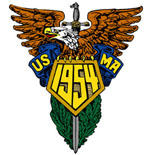 The '54 Crest
The '54 Crest
 General MacArthur stated it would take
General MacArthur stated it would take "at least 10 years" to return Army Football to Respectability
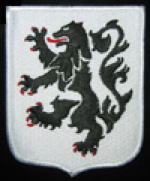 28th Infantry Regiment Black Lion Award is intended to go to the person on his team "who best exemplifies the character of Don Holleder: leadership, courage, devotion to duty, self-sacrifice, and - above all -
28th Infantry Regiment Black Lion Award is intended to go to the person on his team "who best exemplifies the character of Don Holleder: leadership, courage, devotion to duty, self-sacrifice, and - above all - an unselfish concern for the team ahead of himself."
 General George Patton
General George Patton "The Army moves as a team, eats as a team, and fights as a team."
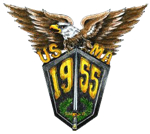 The '55 Crest
The '55 Crest
 They played perhaps Army's Greatest Game. They played perhaps Army's Greatest Game.They were the Team that Gave The Most
 Don Holleder Remember - The Soldiers you will lead Always Come First
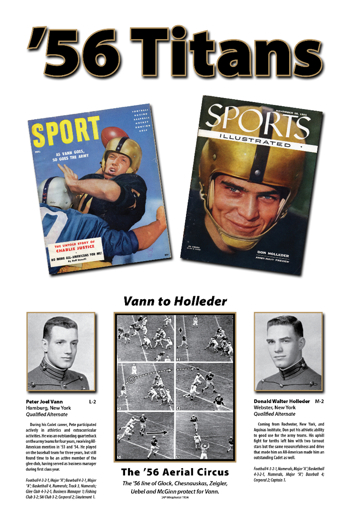 Vann and Holleder Vann and Holleder
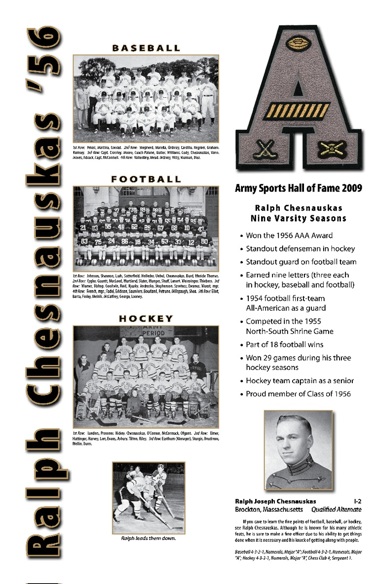 9 Army A's 9 Army A's
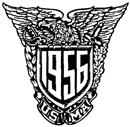 The '56 Crest
The '56 Crest
 The '57 Crest
The '57 Crest
 Can Do
Can Do
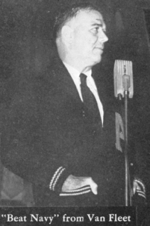 Gen Van Fleet addressing the Corps prior to the Navy Game
Gen Van Fleet addressing the Corps prior to the Navy Game
 Constructed under supervision of Jay Gould "54 and the Ord Dept from a German Rocket Gun captured at Kasserine Pass. First used in the Duke Game.
Constructed under supervision of Jay Gould "54 and the Ord Dept from a German Rocket Gun captured at Kasserine Pass. First used in the Duke Game.
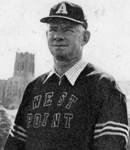 COL "Red" Reeder granted the Cheerleaders Corps Squad status to obtain financial support for their spirit-inducing initiatives.
COL "Red" Reeder granted the Cheerleaders Corps Squad status to obtain financial support for their spirit-inducing initiatives.
 Bob Mischak - - It should be pointed out that Bob was an All American selection, but is not recognized by the Academy as such because of the organization which selected him. Bob Mischak - - It should be pointed out that Bob was an All American selection, but is not recognized by the Academy as such because of the organization which selected him.
 Ubel scores 3 Times against Navy - Vann's facking results in Peter getting tackled - #10 on the ground behind Ubel
Ubel scores 3 Times against Navy - Vann's facking results in Peter getting tackled - #10 on the ground behind Ubel
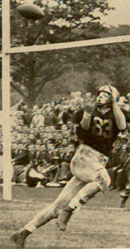 Vann to Sisson
Vann to Sisson
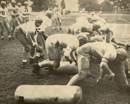 Army's B Squad
Army's B Squad
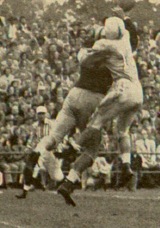 Vann to Mischak. Vann to Mischak.
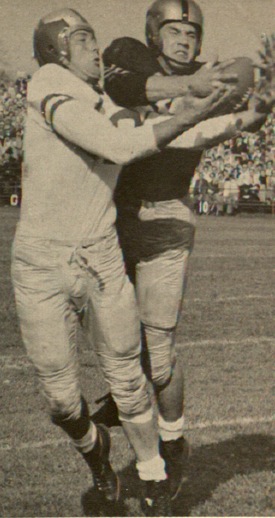 Uebel Intercepts Uebel Intercepts
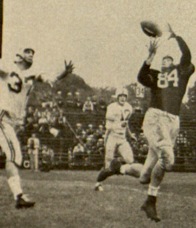 Cody to Don Holleder Cody to Don Holleder
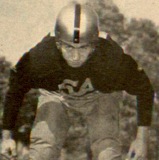 Lasley Lasley
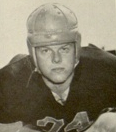 Frank Hicks Frank Hicks
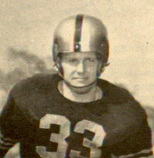 Burd Burd
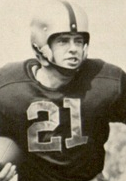 Bill Purdue Bill Purdue
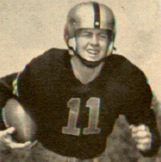 Cody Cody
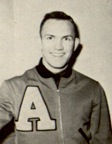 Meador Mgr Meador Mgr
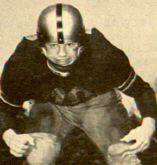 Ron Melnick Ron Melnick
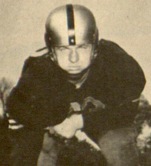 Ralph Chesnauskas Ralph Chesnauskas
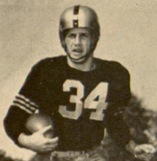 Pat Uebel Pat Uebel
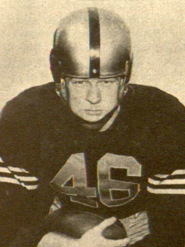 Tommy Bell Tommy Bell
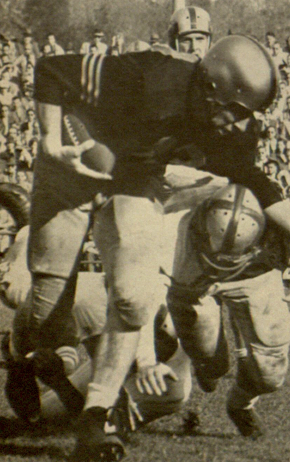 Sisson headed for another score Sisson headed for another score
 Peter Vann stuffs the ball in Jerry's gut Peter Vann stuffs the ball in Jerry's gut
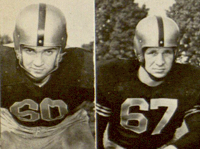 Leroy Lunn & Jerry Lodge Leroy Lunn & Jerry Lodge
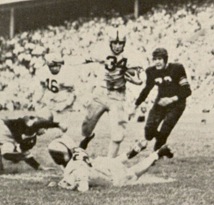 Uebel after taking the handoff from Hagan
Uebel after taking the handoff from Hagan
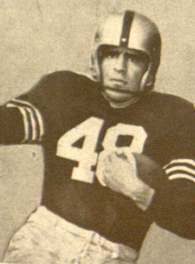 Attaya - Army's Fullback
Attaya - Army's Fullback
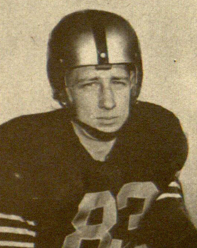 Sisson - one of 3 Great Ends
Sisson - one of 3 Great Ends
 Bob Mischak Bob Mischak
 Ralph Chesnauskas Ralph Chesnauskas
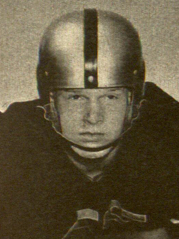 Bob Farris Bob Farris
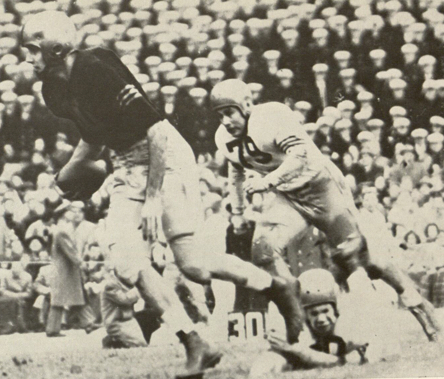 Vann moving out of the pocket
Vann moving out of the pocket
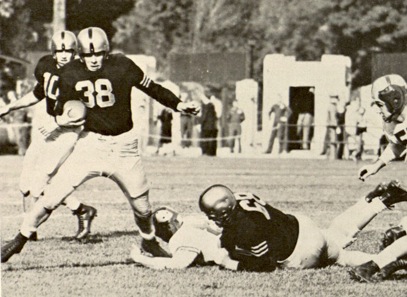 Peter Vann 10, Billy Chance 38, Herdman 68
Peter Vann 10, Billy Chance 38, Herdman 68
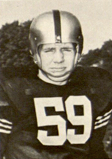 Ken Kramer Ken Kramer
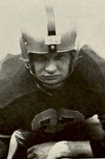 Joe Lapchick Joe Lapchick
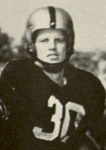 Kirk Cockrell Kirk Cockrell
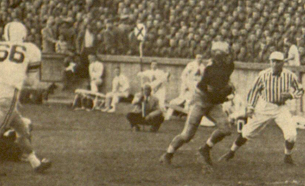 Lodge going down tosses to Paul Schweikert for score. Lodge going down tosses to Paul Schweikert for score.
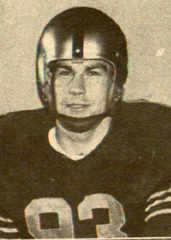 Dick Zeigler Dick Zeigler
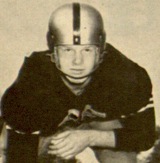 Bob FarrisPlayed the 2d half of the Navy Game blind in one eye. Bob FarrisPlayed the 2d half of the Navy Game blind in one eye.
 Pat Uebel Pat Uebel
 Tommy Bell Tommy Bell
 Peter Vann Peter Vann
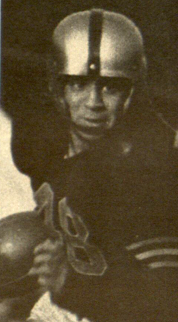 Freddie Attaya Freddie Attaya
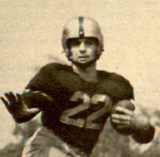 Mike Zeigler Mike Zeigler
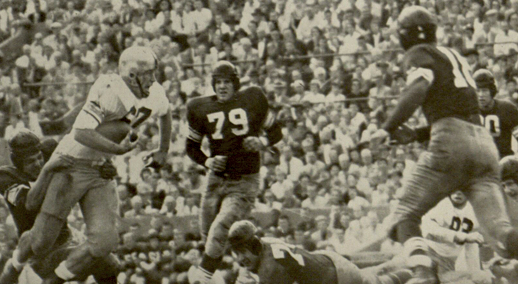 Jerry Lodge wearing #67, playing fullback. Jerry Lodge wearing #67, playing fullback.
 Johnny Wing Johnny Wing
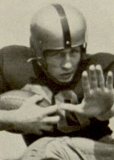 Lowell Sisson Lowell Sisson
 Norm Stephen Norm Stephen
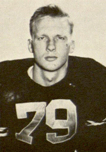 Jack Krause Jack Krause
 Dick Ziegler Dick Ziegler
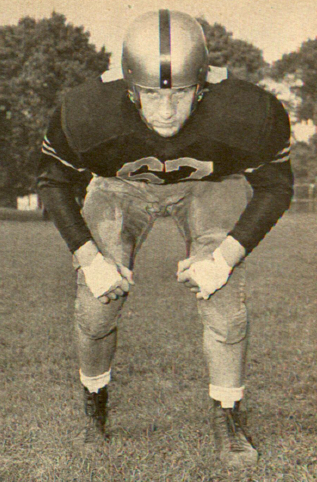 Jerry Lodge Jerry Lodge
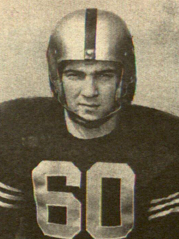 Leroy Lunn Leroy Lunn
 Norm Stephen Norm Stephen
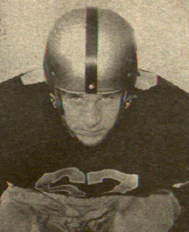 Jerry Lodge Jerry Lodge
 Corps of Cadets for Navy Game Corps of Cadets for Navy Game
 Can Do
Can Do
 General MacArthur stated it would take
General MacArthur stated it would take "at least 10 years" to return Army Football to Respectability
 General George Patton
General George Patton "The Army moves as a team, eats as a team, and fights as a team."
 Don Holleder Remember - The Soldiers you will lead Always Come First
 The '54 Crest
The '54 Crest
 The '55 Crest
The '55 Crest
 28th Infantry Regiment Black Lion Award is intended to go to the person on his team "who best exemplifies the character of Don Holleder: leadership, courage, devotion to duty, self-sacrifice, and - above all -
28th Infantry Regiment Black Lion Award is intended to go to the person on his team "who best exemplifies the character of Don Holleder: leadership, courage, devotion to duty, self-sacrifice, and - above all - an unselfish concern for the team ahead of himself."
 They played perhaps Army's Greatest Game. They played perhaps Army's Greatest Game.They were the Team that Gave The Most
 The '56 Crest
The '56 Crest
 The '57 Crest
The '57 Crest
|
Edward J. York
Pilot of Plane 8 Doolittle Raid
At the bottom of the page are the sequence of events leading up to the Raid
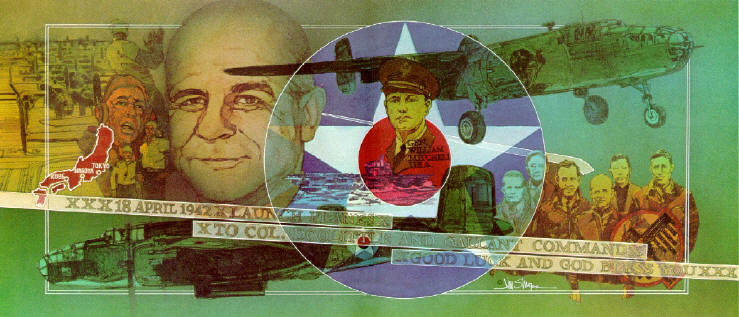
Crew of 8th Aircraft Plane # 40-2242 - Crew from 95th Squadron, 17th Group - (Landed and Interned in Russia)
Captain York's B25 had suffered engine problems prior to the loading of the aircraft on the Hornet, and the flight to Japan compounded this. Despite heavy fuel consumption by both engines, York continued on course to drop his bombs on their assigned targets. Throughout the run the aircraft was defenseless with a top turret that failed to work. Without enough fuel to reach China, Cpt. York elected to fly the shorter distance to Russia where he landed at a field near Vladivostok in hopes of refueling to reach China. Instead, the still neutral Soviets confiscated the bomber and interred the crew for thirteen months. The crew returned home in May 1943 after escaping into Persia.
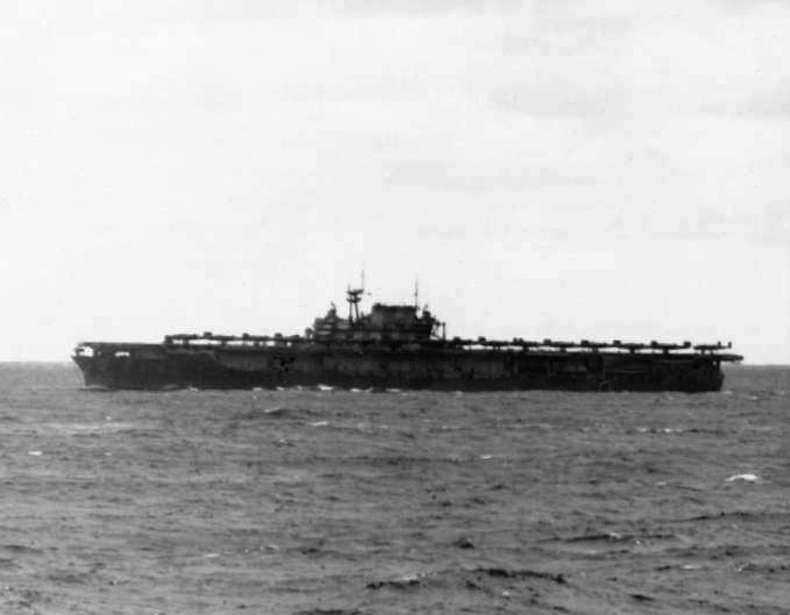
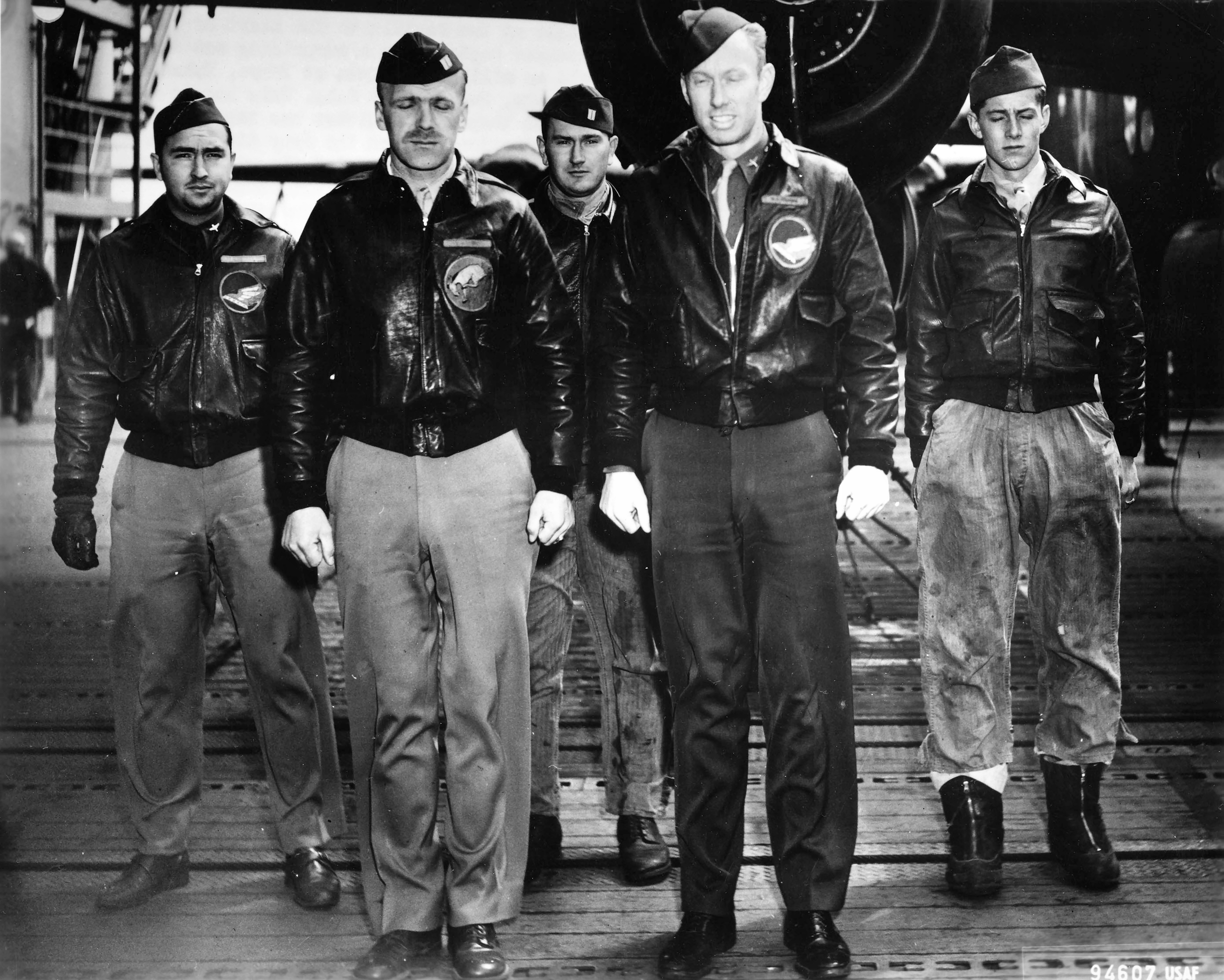
Pilot Capt. E.J. York
Co-Pilot Lt. R.G. Emmens
Navigator Lt. N.A. Herndon
Bombardier SSgt. T.H. Laban
Engineer Gunner Sgt. D.W. Pohl
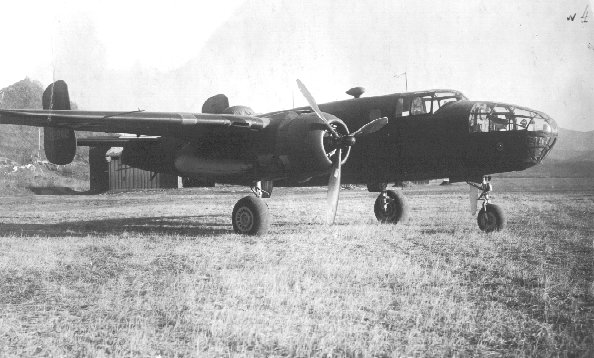
These are images from Vladimir Plotnikov which he located at of York's plane, the day after the raid, in Russia.
http://www.airforce.ru/history/ww2/photoalbum/page_11.htm
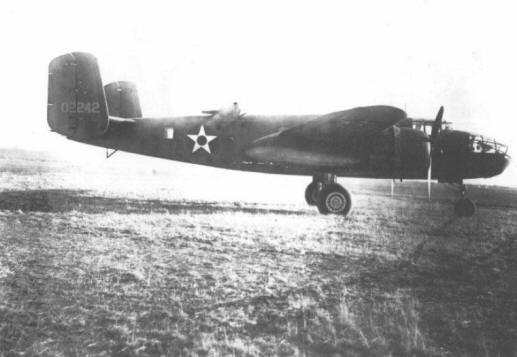
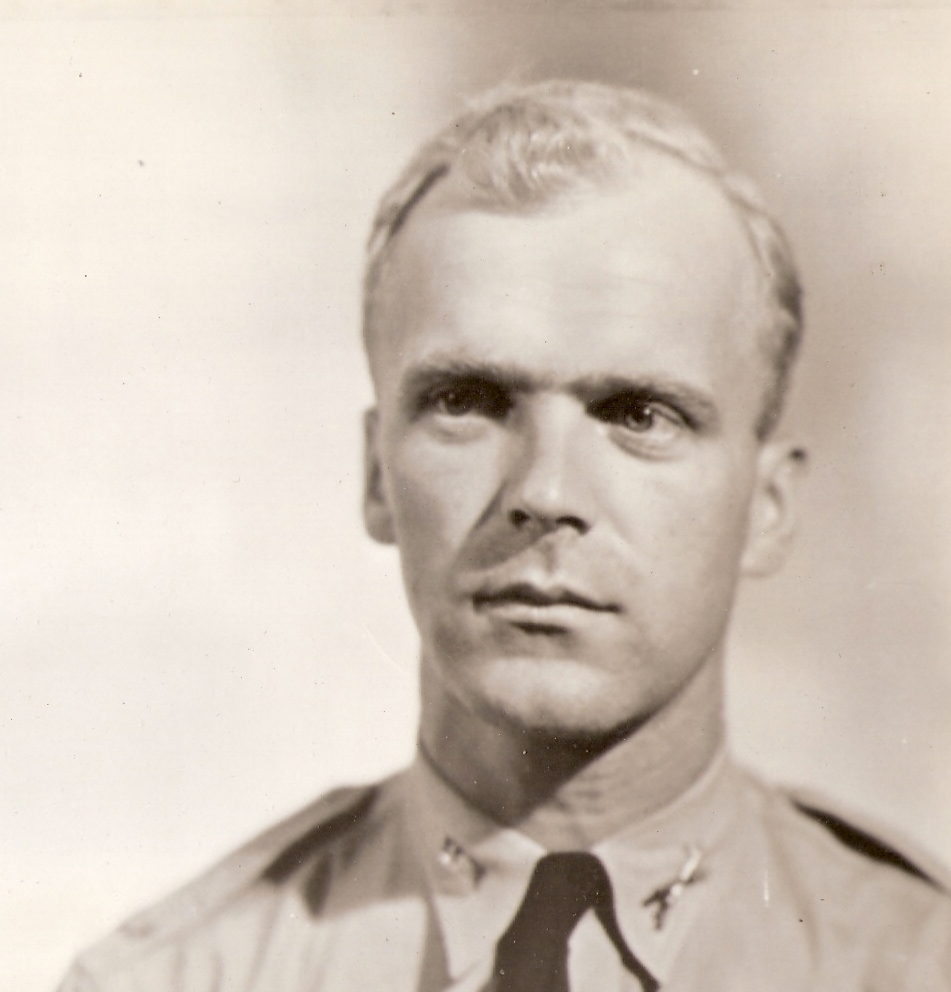
Graduated from Batavia High School in 1928 and enlisted in the U.S. Army (Infantry) in July, 1930. Served at several posts, including Chilkoot Barracks, Alaska, before winning an appointment to the United States Military Academy. Commissioned as Second Lieutenant upon graduation and was assigned to pilot training at Randolph and Kelly Fields where he received his wings in August, 1939. Was interned in Russia after Tokyo Raid for thirteen months. Shortly after returning to the US in 1943 he was reassigned to B-17 unit in Italy. Following World War II, was sent to Warsaw, Poland as Air Attache. Returned to US in 1947 and assigned as Commandant of Air Force Officer Candidate School. Graduated from Air War College and has had service in the Pentagon and in State of Washington. Served as Chief of Staff of USAF Security Service, San Antonio, Texas. Retired in 1968. Decorations include the Distinguished Flying Cross, Legion of Merit, and the Chinese Army, Navy, and Air Corps Medal, Class A, 1st Grade.

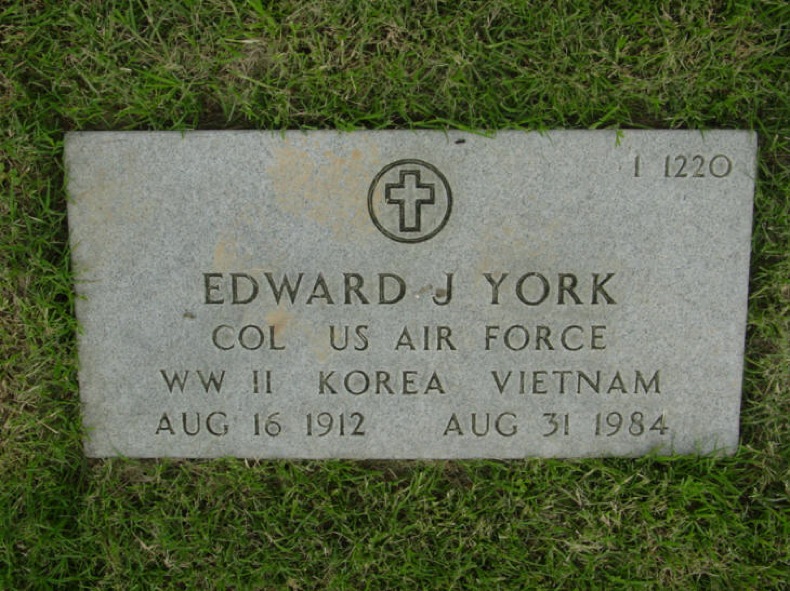
Born August 16, 1912, Batavia, New York
Died August 31, 1984
Fort Sam Houston National Cemetery
1520 Harry Wurzbach Road
San Antonio, TX 78209
210-820-3891
Section 1 Grave 1220
Interment 9/4/1984
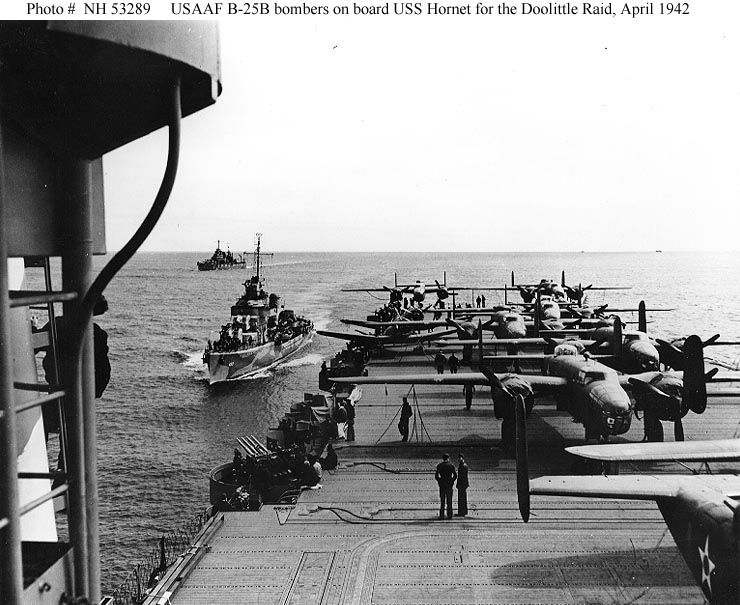
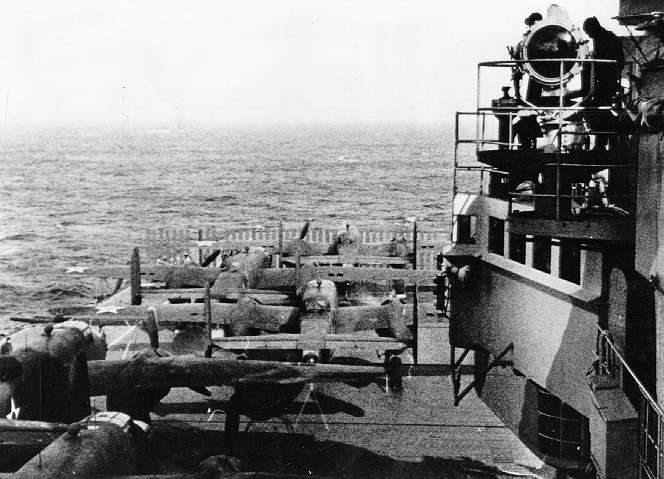

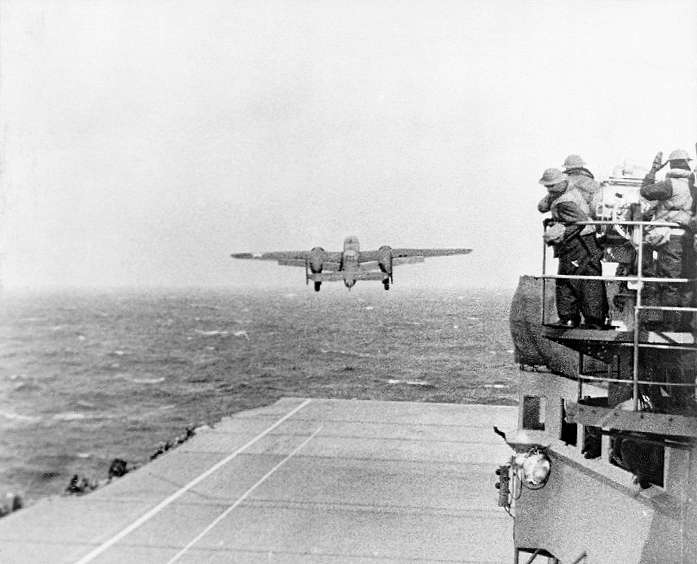

Photos relating to the Raid are at
http://www.doolittleraider.com/raid_photos.htm
B-25 data is at
http://www.doolittletokyoraiders.com/doolittle_B25.htm
http://www.doolittleraider.com/raiders/york.htm
Numerous sites are at
http://www.google.com/search?client=safari&rls=en-us&q=doolittle+raiders&ie=UTF-8&oe=UTF-8
First Joint Action
http://www.doolittleraider.com/first_joint_action.htm#_Toc510516198
Additional info
Soon after the death toll at Pearl Harbor had been totaled, President Franklin D. Roosevelt asked America's top military leaders, Army Generals George C. Marshall and Henry H. 'Hap Arnold and Admiral Ernest J. King, to figure out a way to strike back at Japan's homeland as quickly as possible. Although there was nothing they wanted to do more, it seemed an impossible request to carry out.
In response to the president's persistent urging, Captain Francis S. Low, a submariner on Admiral King's staff, approached Admiral King and asked cautiously if it might be possible for Army medium bombers to take off from a Navy carrier. If so, could they be launched against Japan? Note - As Captain Low was leaving Norfork, he observed Army Medium Bombers making passes at a Carrier Deck which was painted on the runway as a training aid for Naval Aviators. When he approached Admiral King with the idea, King told him to discuss it with Captain Ducan, but they were not to discuss it with anyone.
The question was passed to Captain Donald B. Wu Duncan, King's air operations officer. After studying the capabilities of several AAF (Army Air Force) medium bombers, Duncan concluded that the North American B-25 might be capable of taking off from a carrier deck. He recommended takeoff tests be conducted before any definite plans were made.
When this basic idea was passed to General Arnold, he called in Lt. Col. James H. Jimmy Doolittle, noted racing and stunt pilot who had returned to active duty in 1940 and was now assigned to Arnold's Washington staff. He asked Doolittle to recommend an AAF bomber that could take off in 500 feet from a space not over 75 feet wide with a 2,000-pound bombload and fly 2,000 miles. Arnold did not say why he wanted the information.
Doolittle checked the manufacturers' data on the AAF's medium bombers- the Douglas B-18 and B-23, North American's B-25 and the Martin B-26. He concluded that the B-25, if modified with extra fuel tanks, could fulfill the requirements. The B-18 could not carry enough fuel and bombs, the wingspan of the B-23 was too great and the B-26 needed too much takeoff distance.
Arnold then told Doolittle why he had asked for the information, cautioning him that because such an unprecedented mission was possible, it must be kept top-secret by all concerned. Doolittle promptly volunteered to lead the effort, and Arnold promised him his complete, personal backing for whatever support he felt necessary.
The concept could be expressed succinctly: A Navy task force would take 15 B-25s to a point about 450 miles off Japan where they would be launched from a carrier to attack military targets at low altitude in five major Japanese cities, including Tokyo, the capital. The planes would then fly to bases in China where the planes and the crews would be absorbed into the Tenth Air Force, then being organized to fight in the China-Burma-India (CBI) theater.
On February 2, 1942, two B-25s were hoisted aboard the USS Hornet, the Navy's newest carrier, at Norfolk, Va. A few miles off the Virginia coast, the lightly loaded bombers were fired up and took off without difficulty. The Hornet was then ordered to proceed to the West Coast for its first war assignment.
Jimmy Doolittle, a very energetic man, decided that the B-25 crews would consist of five men: pilot, copilot, navigator, bombardier and engineer-gunner. Twenty-four B-25s and crews would be assigned to the mission from the three squadrons of the 17th Bomb Group and its associated 89th Reconnaissance Squadron, located at Pendleton, Ore. To preserve secrecy, Doolittle personally began making all the arrangements for the training and special equipment without revealing why he wanted things done.
The four squadrons were ordered to Columbia, S.C. En route, the designated planes were modified with extra fuel tanks and associated plumbing at Minneapolis, Minn. New incendiary bombs and shackles were ordered, along with electrically operated motion-picture cameras that would be activated when the bombs were released. Intelligence information maps and target folders for the five major Japanese cities were prepared.
When the four squadrons arrived at Columbia, the word was passed that volunteers were needed for a dangerous mission. Almost every man in the four squadrons volunteered; the squadron commanders chose 24 crews, plus extra armament specialists and mechanics to ready the aircraft. The selected men and the planes were sent to Eglin Field, Fla., beginning on the last week of February.
Doolittle arrived at Eglin on March 3 and assembled the entire group of 140 men.
My name's Doolittle, he said. I've been put in charge of the project you men have volunteered for. It's a tough one, and it will be the most dangerous thing any of you have ever done. Anyone can drop out and nothing will ever be said about it.
Doolittle paused and the room was quiet. Several hands went up, and a lieutenant asked if he could give them any more information. Sorry, I can't right now. I'm sure you will start getting some ideas about it when we get down to work. Now that brings up the most important point I want to make, and you're going to hear this over and over again. This entire mission must be kept top-secret. I not only don't want you to tell your wives or buddies about it, I don't even want you to discuss it among yourselves.
From the first day of training, it was understood that all the volunteer crews would take the training; however, only 15 planes would eventually go on the mission. This was done to assure that there would be plenty of spare crews on hand to replace anyone who became ill or decided to drop out.
As the takeoff training of the pilots progressed, it proved to be a harrowing experience for most of them. Army Air Force pilots were not taught during their training to take off in extremely short distances at bare minimum airspeed. Taking off in a medium bomber with the tail skid occasionally striking the ground was unnatural and scary to them. But under U.S. Navy Lieutenant Henry L. Miller's patient instruction, they all soon learned.
In addition to takeoff practice, it was hoped that each crew would receive 50 hours of flying time to be divided into day and night navigation, gunnery, bombing and formation flying. But maintenance problems kept the planes on the ground most of the time.
Each B-25B model at that time was equipped with one upper and one lower turret, each with twin .50- caliber machine guns. But the upper and lower turret mechanisms malfunctioned continually; the lower turret was especially difficult to operate. Doolittle ordered the lower turrets removed and additional gas tanks installed in their place.
There was a single, .30-caliber movable machine gun in the nose, which was placed in a gunport by the bombardier when needed. There were no guns in the tail, so Captain C. Ross Greening, the armament officer, suggested that two broomsticks be painted black and installed there to deceive enemy fighters. Since the bombing was to be at 1,500 feet or less, Greening also designed a simple bombsight he called the Mark Twain to replace the top-secret Norden bombsight. It was made from two pieces of aluminum that cost about 20 cents.
One of the volunteer gunners had, other duties. When 1st Lt. T. Robert Doc White, a physician attached to the 89th Reconnaissance Squadron, heard of the call for volunteers, he asked to be included. He was told there was no room for a passenger; the only way he could go would be as a gunner. He said that was all right with him. He took gunnery training, qualified with the second highest score with the twin .50s on the ground targets, and was assigned to a crew. His presence on the mission proved to be fortuitous, as shall be seen later.
Doolittle wanted to fly the mission as a pilot. But I wanted to go only on the basis that I could do as well as or better than the other pilots who took the training, he said. I took Hank Miller's course and was graded along with the others. I made it, but if I hadn't I intended to go along as a copilot and let one of the younger, more proficient pilots occupy the left seat.
On one of his training flights, Doolittle flew with Lieutenant Richard E. Cole, copilot; Lieutenant Henry A. Potter, navigator; Sergeant Fred A. Braemer, bombardier; and Sergeant Paul J. Leonard, engineer-gunner. The original pilot had become ill and did not return to flying duty. These men became Doolittle's crew.
Meanwhile, Captain Wu Duncan had arrived in Honolulu and conferred with Admiral Chester W. Nimitz, commander in chief of the Pacific Fleet, and conveyed the plan for a Navy task force to transport the army bombers to the launch point. Nimitz liked the idea and gave the task of carrying it out to Admiral William F. Bull Halsey, who was anxious to tangle with the enemy any way he could.
Duncan worked with the CINCPAC (commander in chief, Pacific) planning staff on the details for a 16-ship task force. It was decided that seven ships would accompany the Hornet from the Alameda Naval Air Station near San Francisco and rendezvous with an eightship force that included Halsey's flagship, the carrier Enterprise. The joinder would take place near the 180th meridian.
By the middle of March, the Hornet, now destined to be the ship that would deliver the B-25s to the takeoff point, passed through the Panama Canal and proceeded to Alameda. At the end of the third week in March, Captain Duncan wired Washington from Honolulu: Tell Jimmy to get on his horse.
This coded message was all Doolittle needed to get his men and planes moving to the West Coast. Since two of the B-25s had been damaged in training, the 22 remaining planes were flown to McClellan Field, Sacramento, Calif., for final inspections before proceeding to Alameda. All of these crews would go aboard the carrier.
Captain Duncan flew to San Diego to confer with Captain Marc A. Mitscher, skipper of the Hornet. Mitscher had not been told about the mission until then and was delighted to have a part in it. Since he had watched the first two B-25s take off successfully several weeks previously, he was confident it could be done. Duncan then went to San Francisco to await the arrival of Doolittle from Florida, Halsey from Hawaii and the Hornet from San Diego.
The three men, joined by Captain Miles Browning, Halsey's chief of staff, met informally in downtown San Francisco to discuss the details and determine if anything had been left undone. The plan was for the Hornet, in company with the cruisers Nashville and Vincennes, the oiler Cimarron, and the destroyers Gwin, Meredith, Monssen and Grayson - to be known as Task Force 16.2 - to leave San Francisco April 2. Halsey, on the Enterprise and in charge of Task Force 16.1, would leave Hawaii on April 7, accompanied by the cruisers Northampton and Salt Lake City, the oiler Sabine,, and destroyers Balch, Benham, Ellet and Fanning.
|
|


 General MacArthur stated it would take
General MacArthur stated it would take  28th Infantry Regiment
28th Infantry Regiment 
 They played perhaps Army's Greatest Game.
They played perhaps Army's Greatest Game.


























































 General MacArthur stated it would take
General MacArthur stated it would take 



 They played perhaps Army's Greatest Game.
They played perhaps Army's Greatest Game.



































 Cadet Barracks
Cadet Barracks

































